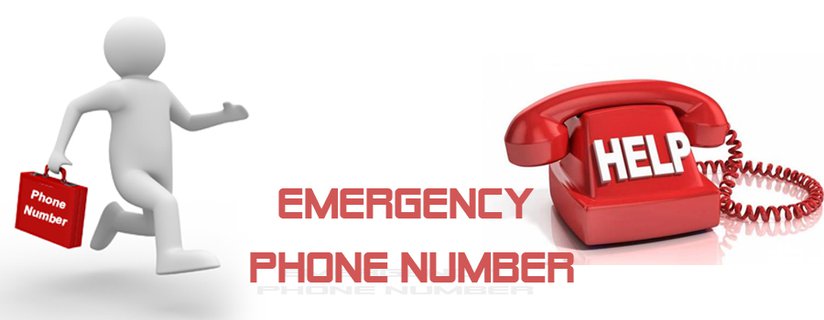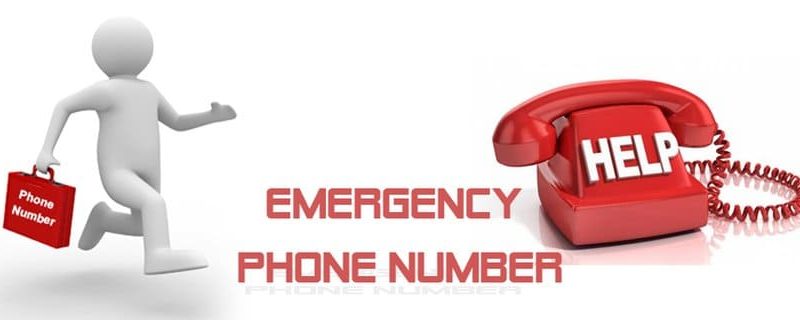The rising number of crimes in today’s age draws attention to an important concern for India: its lack of a common emergency number, similar to 911 in the USA, and 999 in the UK. In case of a mishap, most victims have no knowledge of emergency phone numbers in India, and are forced to either look for a police officer nearby, or get to the closest police station. While there are a number of existing emergency helplines like the 108 national helpline, operated by ZHL, which provides emergency medical services free of cost, very few are aware of it. In addition to that, accidents and mishaps take place anywhere, and at any time, with survival rates dependent heavily on the response time of the emergency ambulance service, and how quickly the victim can receive assistance. While ambulances share most of the responsibility in this regard, the lack of a common number to call definitely increases the delay, leading to lives being lost. This brings to light the urgent need for a reliable, well-maintained, centralized emergency services number that can instantly relay information to the relevant unit, be it the closest police station, fire department, or emergency ambulance service.
The currently available emergency phone numbers in India are still largely disorganized, and there is immense confusion regarding which number one should call for what purpose. For instance, a number of emergency helplines are operated by ZHL, including the 181 Police Helpline service in Punjab, the 104 medical advice helpline in Odisha, and the 1298 helpline for women and senior citizens in Mumbai, but there is a severe lack of awareness regarding the same. Additionally, the emergency number for the police is 100, but for traffic police, it’s 103. Similarly, one can dial 102 for an emergency ambulance service, but 104 serves the same purpose, depending on the state one resides in. As such, there is widespread confusion and a general lack of awareness regarding the same. In addition to that, helplines like these are plagued by prank callers who not only misuse the service, but also end up jamming the lines at times of emergency, preventing genuine callers from getting through. As such, there is an immediate need for a regulatory authority which not only centralises the callers to a single, unified number, but is also able to intuitively flag spam and filter the calls according to relevancy.
To remedy this, the Telephone Regulatory Authority of India (TRAI) had recommended in 2016 that 112 be made India’s official national helpline number, since it is already the GSM standard for emergency phone numbers in India and abroad, and can be dialed by any mobile device connected to a GSM network, irrespective of whether it has a valid subscription, an active mobile connection, a password lock on it, or has run out of balance. In fact, calls can be made to the number even if the phone is outside the coverage area of the telecom operator, but is receiving a signal from a competing brand. 112 also happens to be the emergency helpline number used in most of the European Union and many other countries around the globe. Although India is already late to the bandwagon, the implementation of the same is yet to be carried out in the country. According to a report by Times Of India, Delhi is set to become the first Indian city to officially launch 112 as the unified emergency helpline number, by the end of the current year. The attendants handling the calls will be able to help people reach the police, fire, emergency ambulance service, women’s helpline, senior citizens’ helpline, and children’s helpline, instantly, by transferring them to the relevant department. More and more services will be added to the repository over time, and the entire system will be integrated with these departments to facilitate seamless operation, with callers being able to track the dispatched vehicle through its GPS location, using their smartphones.
Till date, blank calls, mistaken calls, and misuse of the number, had been one of the biggest issues plaguing emergency phone numbers in India. In fact, out of the 25,000 and more calls that are received by ZHL in a day, close to 13,000 are irrelevant, involving enquiries about mobile recharges, gas connection problems, DTH cable issues, abusive calls, calls from children, and more, which severely affect the call centre’s ability to service genuine callers. Until the unified number is set up, the resolution of this will require active participation from the state governments and the Department of Telecommunications (DoT). For the purpose, Delhi police has prepared a list of callers who had repeatedly harassed the officers attending the calls, and shared it with the DoT and DCPs of the districts concerned. In addition to that, the PCR unit has been able to track callers who have dialled emergency phone numbers in India like ‘100’ or ‘112’ multiple times, without need, discovered their addresses, and shared their details with the DCPs in the area. While this is expected to help provide a solution to the issue at hand, the other challenge is in figuring out a way for the attendants manning the calls to be instantly updated with the caller’s precise location, to prevent wastage of time and the run-arounds that the responders have to go through. Attendants manning the phones will also need to be trained in a multitude of regional languages to provide callers with ease, and minimize the call time before the relevant attendant is dispatched to the scene.
While only seven telephone lines are currently dedicated to the 112 services, to be tested in the capital, more and more lines will be added eventually, along with highly trained staff who can understand the nature of the emergency and help callers without wasting much time. However, as the 112 service is yet to be officially implemented nation-wide, being aware of the essential existing helplines can help save many a life, or avert a disaster. The emergency ambulances provided by ZHL, under its 108, 102, and 1298 emergency helplines, are known for their state-of-the-art medical equipment, and highly trained paramedics and drivers. As a result, ZHL has, till date, served over 13066650 people, with its fleet of 3000 ambulances, operating across 16 states in India, echoing its motto of “Every life counts.”
SOURCE:



